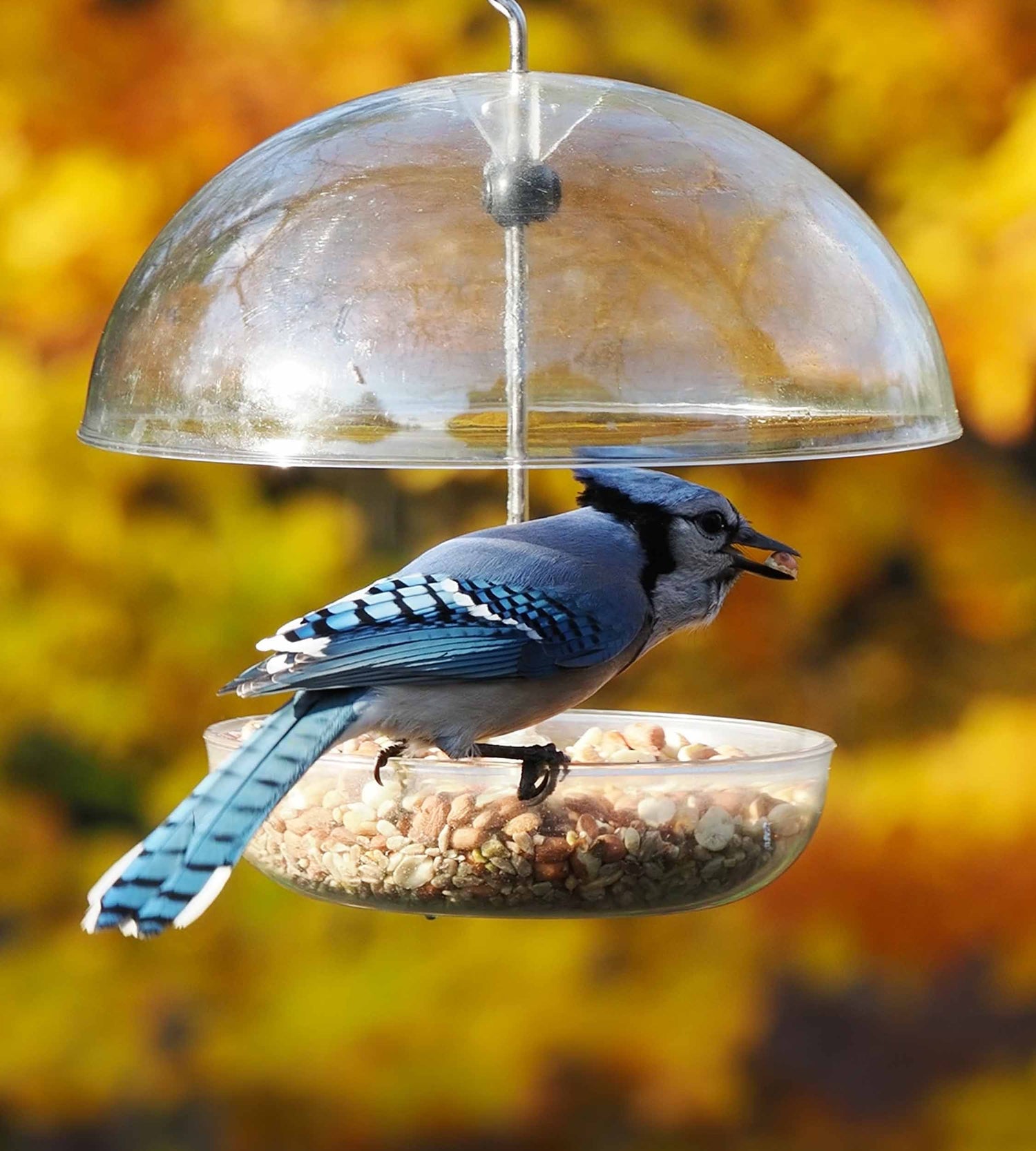Feeding birds can be a rewarding hobby, bringing a variety of birds to your garden and providing endless entertainment as you learn about different species.
One popular bird food is mealworms, attracting a range of birds, from bluebirds to chickadees. But what is the best bird feeder for mealworms?
This guide will help you navigate bird feeders and provide insights into the best options for mealworms, ensuring a successful bird-feeding experience.
Understanding Mealworm Feeders
Mealworm feeders are designed to attract wild birds that enjoy protein-rich foods. These feeders vary in style but aim to hold mealworms securely.
The right feeder keeps mealworms fresh and safe from pests, helping maintain food quality and ensuring birds receive nutritious meals. Some feeders come with protective covers to shield mealworms from rain and provide shade on sunny days.
Choosing the right feeder type depends on the birds you want to attract. Bluebirds, chickadees, and woodpeckers have different preferences, so it’s helpful to consider their needs.
Top Feeder Types for Mealworms
Selecting the right mealworm feeder can enhance your bird-feeding experience, as different feeders suit different preferences and environments.
• Tray feeders offer an open design, making mealworms easily accessible. They work well for attracting various wild birds and are easy to clean.
• Dish feeders are small and compact, ideal for spaces where you want to watch birds up close, like near a window.
• Hanging feeders provide versatility, allowing you to suspend them from trees or stands. This keeps mealworms off the ground and away from unwanted visitors.
Each type serves a unique purpose, enabling you to cater to specific bird species. Choose based on your bird-watching goals.
Feeder Placement and Pest Deterrence
Proper feeder placement is crucial in attracting desired birds while deterring pests. Place the feeder in a quiet area away from high foot traffic.
Mount feeders at a reasonable height to discourage ground pests like raccoons and squirrels, ensuring that birds can feed undisturbed.
Using baffles is another effective strategy, as these devices block pests from reaching the food and keep mealworms safe.
Monitor the area regularly and adjust placement if pests become a persistent problem. A strategic placement plan ensures feeding success.
Material and Maintenance: Ensuring Longevity and Hygiene
Choosing the right material for your feeder is essential. Metal feeders are durable and resist weathering, while plastic ones are lightweight and easy to clean.
Regular cleaning prevents disease among wild birds. Wash feeders with mild soap and water, drying thoroughly before refilling with mealworms.
Inspect your feeder regularly for wear and tear. Prompt repairs maintain its longevity and ensure a safe feeding environment for visiting birds.
Attracting a Variety of Birds with Mealworms
Mealworms are a favored treat for many wild birds, and offering them can attract a wide range of species to your garden.
Bluebirds are particularly fond of mealworms and will visit regularly if they’re available. These birds enjoy feeders that offer easy access to their favorite snack.
Chickadees and woodpeckers are also drawn to mealworms. They appreciate feeders designed with small openings to prevent spills and keep the mealworms secure.
Orioles, with their distinct coloration, enjoy mealworms as well. Providing a combination of mealworms and fresh fruit can entice them to your feeding stations.
Additional Tips for a Successful Mealworm Feeding Experience
For a rewarding bird-feeding experience, consider offering a mix of bird food alongside mealworms. Seeds and suet cakes provide essential nutrients to visiting birds.
Regular cleaning of feeders is critical to prevent mold and bacteria, ensuring a healthy feeding environment for your avian visitors.
Keep an eye on local bird activity to adjust your feeding strategies, helping attract a diverse range of bird species year-round.






